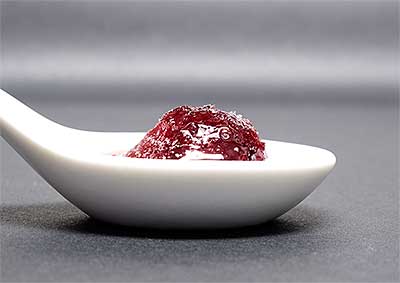March 31, 2014
Intermède

vin rouge aux épices
(spiced red wine)
The date was Friday, September 29th, 2006. The place was the Hostellerie Saint-Georges in Gruyères, Switzerland. The chef handed me six brown, one-liter bottles and instructed me to empty them into the large Staub cocotte on the induction burner. At first, I didn’t know what was in the bottles. Their shape reminded me of the chemical bottles I used in the darkroom in college. Then I read the labels: vin rouge, produit de l’Algérie (red wine, product of Algeria). The chef said that each bottle cost 75 Swiss cents, or about one US dollar at the time. He said that it was one wine he could keep in stock and not have to worry about anyone stealing.
Instead of a cork, the each bottle had crown cap. Since a bottle opener is not included in my traveling kit, I asked if he had one. He handed me a dinner knife. My look in response must have been befuddled since he then showed me how to wrap my left hand around the neck of the bottle, and use the knife to pop open the cap while leveraging off my top knuckle—a newfound skill I have since had many occasions to use.
After the wine, a few kilos or so of sugar, a handful of cinnamon sticks, and a smaller handful of star anise pods were added to the pot. The chef then went to the walk-in refrigerator brought back a case of the smallest pears I had ever seen. None of the pears was longer than 5 cm (2 in), and all were very hard. I inspected each one, and tossed the good ones into the pot with the wine. After a couple of hours of simmering, the pears were moved to bale-top, 2-1⁄2-liter jars. The spices were strained from the poaching liquid, and the liquid was added to the jars.
Later that fall, when I was back in California, I found some Seckel pears that matched those I had seen in Switzerland. (Forelle is another variety I now see that would also work for this preparation.) I proceeded to prepare the recipe from my notes and add it to my website. Now, every fall, when small pears show up at my neighborhood produce shop, I poach a dozen or so. They last many months in the syrup under refrigeration.
This year, rather than dump the poaching liquid after all the pears were eaten, I decided to freeze it. I assumed it would freeze into a granité, as had happened before with pear poaching liquid, but I wasn’t sure. It turned out that the sugar concentration was too high for the syrup to freeze hard at the -20 °C (-5 °F) level I keep my freezer. It did freeze into a firm slush, which makes an interesting intermède.
The proportions I used for the poaching syrup are as follows. This will make enough for about 12 to 16 servings.
125 ml (1⁄2 c)
cheap, hearty, red wine
125 g (5⁄8 c)
granulated sugar
1 large
cinnamon stick
1 complete
star anise pod
1. Place all the ingredients in a small saucepan, bring to a boil, cover, and simmer for a couple of hours.
2. Strain the cinnamon stick and star anise pod from the liquid. Set the liquid aside to cool.
3. Transfer the liquid to a freezer container. Freeze until it is as solid as it will get.
© 2014 Peter Hertzmann. All rights reserved.
